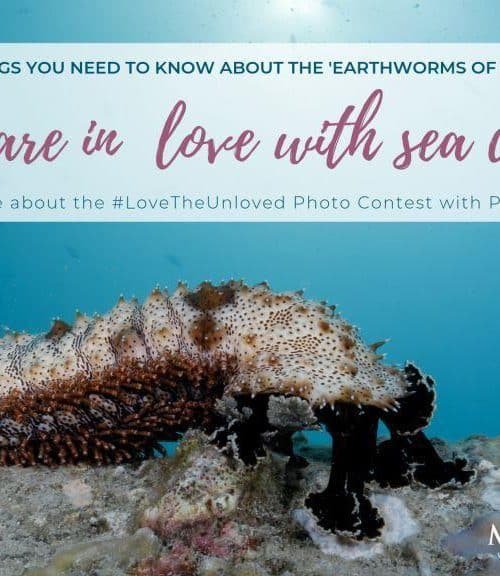There is a creature that we come across on every single dive, without fail. A creature that many people don’t look at twice and most of the time just give it a fleeting glance. It is a creature which may not look as pretty and as exciting as other marine creatures, but it has a role to play in the ecosystem that is just as important as any charismatic fish or mega-fauna. In fact, one could argue that they are responsible for ensuring that aquatic ecosystems remain stable and healthy. They are the earthworms of the oceans and are known as ‘holothurians’. If the term ‘holothurian’ still leaves you confused, then let us address them by their more common name – the sea cucumbers.
This Is No Vegetable
These cucumbers of the sea live very slow paced lives, cleaning up the environment by feeding on decaying organic matter, bacteria and algae. They are the trash cans of the ocean. Closely related to starfish and sea urchins, sea cucumbers belong to the echinoderms that have leathery skin and elongated bodies. Although they are not as eye-catching and aesthetically pleasing as the hundreds of other species gracing the marine world, they have an important role in being the cleaners and recyclers.
Recent studies by the University of Sydney have shown that they may play an extremely important role in mitigating one of the biggest challenges our planet faces today – climate change. When sea cucumbers digest their food, the process that takes place within their gut can reduce the acidity of the areas that they poo in. Take this in relation to the rising sea temperatures and the increasing acidity of the ocean, and we can see that sea cucumbers can help counter the effects of climate change.
When faced with danger, sea cucumbers are able to expel their internal organs with a toxic substance, regenerating their organs in less than 5 weeks. They have a basic skeleton underneath their leathery skin which usually consists of plates and spines which can be exposed and used as protection against sea predators. Couple this with the fact that sea cucumbers breathe through their backside and they are able to self-reproduce and you have a pretty unique sea creature that’s for sure.
Count the Cucumbers
We are lucky to have large numbers of holothurians in the waters surrounding Koh Tao that you are almost guaranteed to see a few different species in a single dive. Worldwide there are 1717 recorded species of sea cucumbers and some reach impressive lengths – some spotted around Koh Tao have been estimated to be 8 foot long – however, the average length is 3.9 inches to 12 inches.
The Pinkfish, the Black sea cucumber and Marbled sea cucumber are the common species seen around here and their colours can range from pitch black to light pink. The Giant synaptid cucumber is extremely common and can be seen hanging off sponges across most of Koh Tao’s dive sites.
All species, although they appear slightly different looking to each other, act as some of the most important decomposers surrounding Koh Tao and help keep nutrient levels in the water low. This is extremely important for a rapidly developed island like Koh Tao, as one of the recognised pollutants we face is eutrophication – nutrient runoff from the land. Master Divers are part of an ongoing project led by the non profit organisation Inoceanna to analyse and track the quality of the water, looking closely at the level of nutrients across different locations around Koh Tao.
The Unloved
Unfortunately, sea cucumbers are loved in a way that does not give them much hope for their future. They are loved as a delicacy in many parts of the world and are actually some of the highest valued seafood on the planet, reaching up to $3000 per kilo of dried sea cucumber. Because of this high value and their sedentary nature, meaning they are captured easily, they are fished extensively both from shallow and much deeper waters. Not all species self-reproduce, some release sperm and eggs into the water column and for this method of reproduction to be successful, their needs to be high numbers of individuals in dense patches. Illegal sea cucumber poaching is a long-standing issue and the fishing and export of catch from remote areas and Marine Protected Areas have caused a decimation in numbers across their ranges.
Luckily for the holothurians, they have just begun receiving much-needed attention. It has been proposed that sea cucumbers should be included in the CITES Appendix II which will work to manage and sustain their trade whilst preserving these species and letting them play their ecological role.
When we take a closer look at the ecological value of holothurians, it is easy to see that if we lose these creatures then we faced increased threats to coral reefs, seagrass beds and lagoon areas. Their disappearance will create a knock-on effect for their more charismatic neighbours that everybody loves.
For more information and a closer look at these important marine species, check out the Project AWARE #lovetheunloved photo contest and join us to support the CITES Cop18 proposal!




